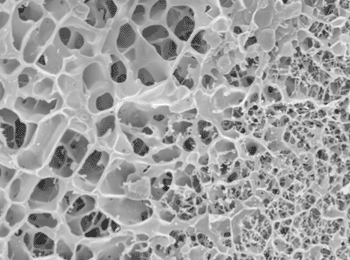Optical Tweezers Reveal Limitation of Nanoparticle Mobility in Lung Mucus
By LabMedica International staff writers
Posted on 29 Oct 2012
A study using sophisticated laboratory instruments has provided important insights into the structure of the lung mucus and revealed the cause for limited mobility of nanoparticles within the mucus. The findings have particularly important implications for inhaled-drug development as well as for better understanding of viral lung infection and airway pollution pathologies. Posted on 29 Oct 2012
Evidence has been contradictory as to the extent to which nanoparticles can move through the lung mucus and scientists have been unable to explain why some inhaled drug medications do not reach their theoretically predicted target destinations. A European team led by scientists at Saarland University (Saarbruecken, Germany) and the Helmholtz Center for Infection Research (HZI; Saarbruecken, Germany) has now shed light on this dilemma using a novel, highly specialized approach combining cryogenic scanning electron microscopy, magnetic field movement tests, and optical tweezers force assessment tests. The researchers found that nanoparticles are blocked by the unusual gel rod structures that function like bars of a cage.

Image: Lung mucus - showing the rigid gel scaffold separating large, liquid gel filled pores (Photo courtesy of Saarland University, Schneider/Kirch et al).
Claus-Michael Lehr, professor for Biopharmacy and Pharmaceutical Technology at the Saarland University and head of the "Drug Delivery" Department at the Helmholtz Institute for Pharmaceutical Research Saarland, a branch of the HZI, explained that normal gels have a microstructure that resembles a delicate spiderweb made from thin, very fine threads that enclose small pores. When viewed under the microscope, lung mucus, by comparison, looks more like a sponge, with rigid, thick gel rods separating large pores filled with liquid gel. These scaffold proteins are called mucins. There is also high heterogeneity in the size of the voids and pores in mucus. Many previous studies found nanoparticles in the mucus to be highly mobile because the research was done on a nanometer scale, measuring movement inside the individual liquid gel containing pores, not between the pores. The current study has now shown that nanoparticle movement through the mucus mesh is obstructed by the high rigidity of the scaffolding surrounding the pores.
One of the research tools used in the study was a set of optical tweezers operated by Prof. Christian Wagner and his team of experimental physicists at the Saarland University: bundled laser beams used to grab and move the nanoparticles similar to regular pair of tweezers. "We can use the optical tweezers' laser beams to measure the force that is required to move a particle within the gel. This allows us to make conclusions about the medium that the bead is moved through," explained Prof. Wagner. "We were able to pull the bead through the liquid inside the pore at a constant force – just as we would if we were dealing with a normal gel. However, whenever the bead hits the pore's wall, in other words the mucus's gel rods, the laser beam is unable to move it any further."
The study was published before print, online, on October 22, 2012, in the journal Proceedings of the National Academy of Sciences of the United States of America (PNAS).
Related Links:
Saarland University
Helmholtz Centre for Infection Research














